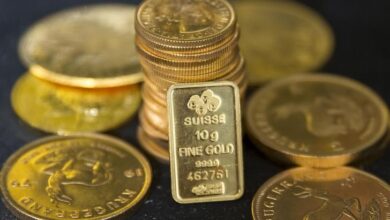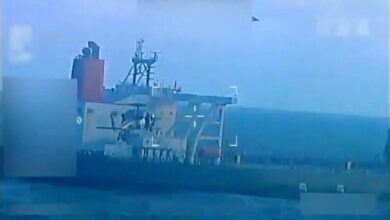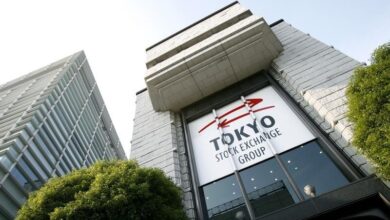UAE automation push pays off in bridging the cost of manufacturing

The UAE’s heavy and early investments in renewable energy sources, advanced technology, and its reliable trade reputation, are positioning it to become a future regional heavyweight and reduce its import dependency.
The Gulf state, which brings in goods and services equivalent to more than 90 per cent of its gross domestic product as of 2023, according to the World Bank, has found the fruits of its early-bird investments ripening.
This is compounded by recent geopolitical events that have pushed the UAE centre stage. The global economic landscape reshaping under the pressures of the US-China trade war and mounting geopolitical tension means nations are leading to reassembly of supply chains and co-operative partners.
The UAE stands as a grounded and capable ally in business and trade, this is demonstrated by its US deal for a $1.4 trillion investment framework over 10 years announced in March 2025 and President Donald Trump’s visit to the region. The UAE’s manufacturing readiness has it poised for major possibility as a destination of future production and assembly as the world’s needs change.
Strategic neutrality
The UAE’s foreign policy – marked by diplomatic pragmatism and strong ties with both East and West – offers a critical edge. The UAE maintains open and friendly trade relationships with major global economies, including the US, China, India and the European Union.
The UAE is also practising “minilateralism”, an emerging concept the Washington Institute describes as how small groups of nations collaborate to tackle problems or pursue mutual goals. One example is its partnership with India to establish an information and communications technology centre in Ethiopia.
As India seeks new markets for its $26 billion tech exports it uses the UAE as port of entry, with which it benefits from 99 per cent tariff reductions with its UAE Cepa agreement. The UAE enhances its role as a trade hub for re-exporting to Ethiopia and the wider African continent, and their joint ICT centre in Ethiopia aims to train five million coders by 2027, boosting regional digital development.
The UAE has signed 21 Comprehensive Economic Partnership Agreements. Deals struck with India, Israel, Turkey, Indonesia, Cambodia, Georgia, Costa Rica and Mauritius have already taken effect.
This geopolitical neutrality enables it to become a trusted manufacturing and distribution base for multinationals seeking to hedge against supply-chain risk without taking sides.
Tech advantage
At the heart of the country’s industrial transformation is Operation 300bn, an ambitious strategy spearheaded by the Ministry of Industry and Advanced Technology. The goal, to double the manufacturing sector’s GDP contribution from Dh133 billion to Dh300 billion ($36.2 billion-$81.6 billion) by 2031.
Key pillars of the strategy include prioritising high-value sectors such as aerospace, pharmaceuticals, food security and renewable energy. Harnessing cutting-edge technology such as AI, robotics and additive manufacturing, and building domestic capacity through initiatives like the National In-Country Value Programme and Make it in the Emirates campaign.
The Emirates Development Bank is anchoring this strategy with Dh30 billion in targeted funding, supporting more than 13,000 SMEs and creating 25,000 industrial jobs.
While traditional manufacturing centres rely on cheap labour, the UAE is betting on automation and Industry 4.0 to bridge the cost gap. Smart factories, robotic assembly lines and AI-driven supply chains are rapidly taking root in Dubai and Abu Dhabi’s industrial zones.
These innovations neutralise the demographic disadvantage of a small local population and mitigate labour cost pressures.
Low cost, abundant energy
Access to inexpensive and stable energy, including rapidly scaling clean energy sources, gives the UAE a strong cost advantage, especially for energy-intensive sectors such as aluminium, petrochemicals, and green hydrogen. With global investors increasingly prioritising sustainability, the UAE’s pivot to eco-conscious industrialisation is both timely and strategic.
The country’s alignment with global climate goals, including net-zero targets and the promotion of circular economy principles, positions it favourably among ESG-conscious multinational firms.
The UAE’s heavy investment in renewables and nuclear energy reduces the carbon intensity of its manufacturing sector. For example, Emirates Global Aluminium is powered partly by solar and nuclear, has a carbon footprint 50 per cent lower than the global average, making it attractive for markets with strict emissions standards.
For instance, the EU’s Carbon Border Adjustment Mechanism, effective from 2026, levies tariffs on carbon-heavy imports such as steel, aluminium, cement and chemicals. UAE-manufactured products, made using clean energy, have lower carbon emissions and thus incur reduced tariffs, estimated at €70 ($78) per tonne of CO2 equivalent (tCO2e) as of May 17 and projected to go up to 149/tCO2e by 2030 according to BloombergNEF, boosting their competitiveness against higher-carbon alternatives.
Navigating the challenges
While the road map is promising, challenges remain such as regulatory complexity, access to finance, talent shortages and fierce regional competition.
Currency constraints further complicate the UAE’s competitiveness. The UAE dirham’s peg to the US dollar limits monetary policy flexibility, preventing the country from adjusting its currency to maintain price competitiveness when the US dollar strengthens or when US interest rates rise above those of competitors.
Additionally, rising operational costs, particularly for imported materials, and global protectionist trends could create headwinds. However, co-ordinated action between government, industry and finance is steadily dismantling these barriers. Schemes such as the Industrialists Programme aim to cultivate a skilled Emirati workforce, while public-private dialogue is improving bankability and risk sharing.
Conflicts in neighbouring areas, such as the Israel-Gaza conflict and instability in Yemen, disrupt regional supply chains and deter foreign investment in manufacturing. US concerns over technology leakage to China could limit access to critical technology such as 5G and AI chips, vital for smart factories. These tensions also raise shipping and insurance costs for UAE exports through the Strait of Hormuz, a critical trade route.
The UAE’s 3.5 million workforce lacks sufficient AI and robotics experts, with only 2,000 graduates annually from MBZUAI and similar programmes, necessitating 30 per cent expatriate hiring for smart factories.
While the Emirates Development Bank’s Dh30 billion supports 13,000 SMEs, 60 per cent of smaller manufacturers report loan rejection rates due to high automation project risks, limiting Industry 4.0 adoption.
A strategic moment
Despite these challenges, co-ordinated action between government, industry and finance is steadily dismantling barriers. The UAE’s manufacturing push is not merely about factories and GDP figures, it’s about repositioning the nation in the global value chain.
As major economies unravel old supply lines and seek stable, tech-savvy alternatives, the UAE has what others lack: political neutrality, visionary strategy, world-class infrastructure and the will to act.
The era of globalisation as we knew it may be fading. But in the space it leaves behind, new regional powers will rise. The UAE, bold and prepared, is on track to become one of them.





